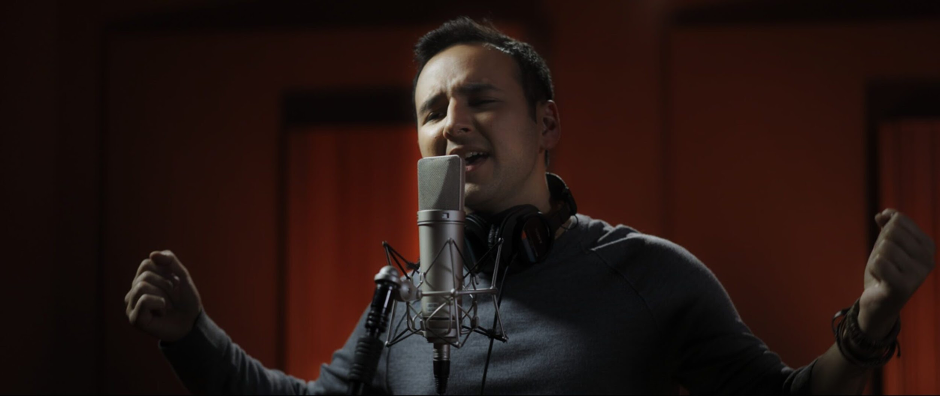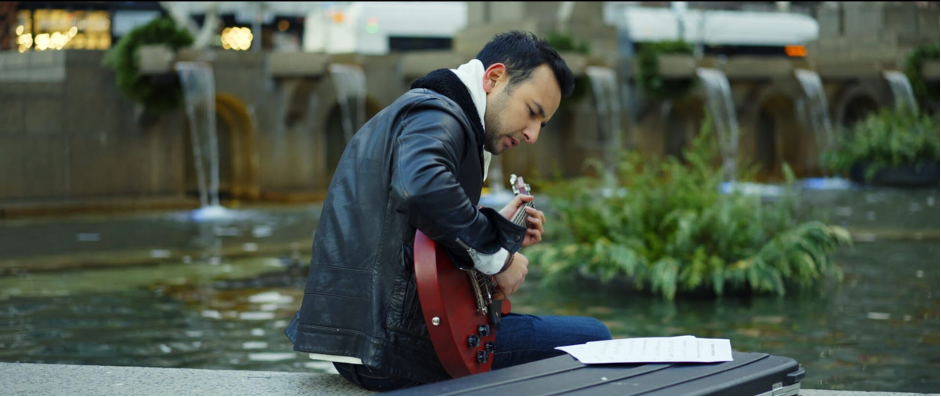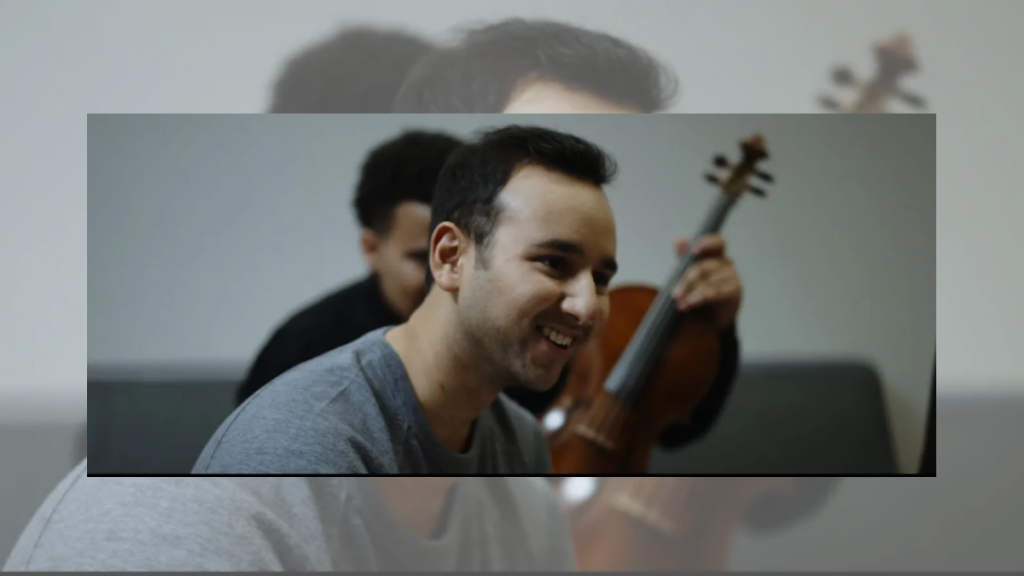Music, often regarded as the universal language, has a profound impact on our lives. It serves as a powerful tool for expressing emotions, promoting social movements, and even shaping entire cultures. The music industry, a global phenomenon and multi-billion-dollar business, continues to evolve in response to technological advancements, audience preferences, and the artistic innovation of its contributors.
In today’s digital age, the industry is more dynamic than ever. Music is no longer confined to physical formats or geographic boundaries; it is streamed in real-time, shared on social platforms, and distributed globally with the click of a button. This surge in digital accessibility has paved the way for more voices to be heard, more styles to be explored, and more stories to be told.
Amid the diverse mosaic of modern music, one artist stands out for his versatility, creativity, and commitment to his craft: Viraj Bahri. A music producer, engineer, video director, and singer-songwriter, Bahri is a multi-talented force within the industry. Born and raised in India, he embodies a fusion of East and West in his music, blending traditional elements with contemporary soundscapes.
Viraj’s career, spanning nearly a decade, has been characterized by an impressive array of achievements and milestones. Educated at the prestigious Berklee College of Music, his expertise encompasses music production, engineering, and video direction. This diverse skill set has fueled his success across various platforms and roles. From working with leading Indian music label, Sony Music India, to coordinating voiceover dubs for global giants like Netflix and Disney, Bahri has demonstrated a rare ability to traverse genres and mediums.
A testament to his talent and impact is his remarkable achievement of leading a project that married his dual passions for music and film. Viraj directed and wrote a promotional music video for Berklee that not only received the backing of the college president, Erica Muhl, but also caught the attention of Sony Music India. The project went on to garner over two million views, securing a place on various media platforms across India.
Viraj’s prowess is further validated by his work on the Grammy-nominated album “Shuruaat” with the Berklee Indian Ensemble, and his contribution as a voiceover assistant director for the Netflix film, “Takeover”. As a pop artist, he has amassed over 1.5 million views on his personal YouTube channel and performed at significant events, including one for “His Holiness, The Dalai Lama – Delhi, India.”
In a recent interview, we had the pleasure of diving deeper into Viraj Bahri’s illustrious career. From his experiences in music and film to his vision for future projects, Bahri shared valuable insights into his journey so far.
First and foremost, we would like to congratulate you in your involvement with a Grammy-nominated album like “Shuruaat”, in partnership with the Berklee Indian Ensemble. Could you share with us more about your role and contributions towards this commendable project?
“Shuruaat” represents a monumental undertaking by the Berklee Indian Ensemble, uniting a constellation of exceptional musicians, producers, and engineers. The project expanded as it progressed, enriched by the talents of various artists who joined in and brought additional layers of richness to the undertaking. The principal challenge in such a comprehensive endeavor, I believe, lies in the domains of planning and scheduling. Once these aspects are addressed, the process of collaboration unfolds as an exciting journey filled with unanticipated revelations.
The album features eminent personalities, including tabla virtuoso Zakir Hussain, vocalists Shankar Mahadevan and Vijay Prakash, and Bollywood icon Shreya Ghoshal. It is a comprehensive representation of the ensemble’s collective accomplishments over the past decade, truly a testament to their unity, their familial bond.
Interestingly, this marked the first time an album from Berklee achieved a nomination for the prestigious Grammy awards. This recognition adds a unique accolade to the collective achievements of everyone involved in this memorable project.
.

How did you get involved with the Berklee and Sony Music India commercial?
The Berklee X Sony Music commercial was an absolute dream project for me. Melding Berklee’s diverse community and culture with Sony Music India, one of India’s leading music labels, proved to be an invigorating experience. Over the past four years, both Berklee and Sony have recognized numerous projects of mine for their unique writing and production styles.
In my final semester, I proposed a script and concept for a Berklee promotional video that deeply resonated with the president, Erica Muhl. Consequently, she entrusted me with leading this project and executing it precisely as I envisioned. Her support and faith in me were extraordinarily motivating and reassuring.
Upon completion of the project, Sony Music India was so impressed that they decided to re-release and distribute the project on their platform, which boasts over 50 million subscribers. The project went on to garner more than two million views, was featured in numerous newspapers, and even received airtime on radio stations across the country.
Apart from the achievements we’ve already discussed, you’ve gained significant recognition in India for your rendition of the national song, launched by two renowned music labels. Could you share how this project unfolded?
“Vande Mataram,” India’s national song, is undeniably the heartbeat of the nation. Rendered in the ancient language of Sanskrit, “Vande Mataram” or “I bow to thee, mother,” finds its roots in the revered novel “Anandamath,” penned in Bengali and Sanskrit by literary legend Bankim Chandra Chattopadhyay in 1882.
This melody is etched in every Indian’s heart. Despite its universal resonance, it has historically symbolized homage to the motherland. However, in 2014, a horrific rape incident in India’s capital, New Delhi, known as the Nirbhaya case, cast a pall of sorrow and shock over the country, leaving its populace in a state of despair and righteous anger.
With the initiative “Vande Mataram Restrung,” our mission was to connect with India’s younger generations through a revamped version of the National Song, offering a novel perspective. This renewed interpretation underscored the paramountcy of revering women as the precursor to veneration of the land. Serving as the lead vocalist on this undertaking was an immense honor and responsibility. My heart swells with eternal gratitude for being chosen as the representative voice of my nation’s youth. Of all my ventures, this project remains nearest to my heart.

Could you compare and contrast the challenges faced when orchestrating a large group versus when you’re the primary performer for monumental occasions, like your performance for the Dalai Lama?
In my experience, both directing a large ensemble and performing as the main act bring distinct and exhilarating challenges.
When leading a large group, the greatest hurdles often lie in the logistical aspects such as planning and scheduling. Despite having a team specifically assigned to handle these duties, it still presents a considerable challenge. However, the joy of collaboration, which always emerges as a highlight of any endeavor, more than compensates for these logistical demands.
Similarly, stepping into the spotlight as the principal performer isn’t a solitary pursuit, contrary to what one might think. It requires synchronicity with your team and a collective spirit. The real magic unfurls only when the entire ensemble harmonizes perfectly, lighting up the stage with a stunning performance. Hence, while the roles may differ, the underlying principle of teamwork remains steadfastly significant in both scenarios.




